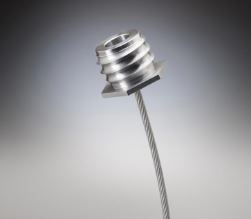 Understanding and avoiding the effects of wire rope bending
Understanding and avoiding the effects of wire rope bending
November 6, 2017 REDWIRE is news you can use from leading suppliers. Powered by FRASERS.
Posted by Bergen Cable Technology, Inc
Mfr Mechanical Cable, Cable Assemblies & Push-Pull Controls. Original Mfr Of Safety Cable, A Patented Fastener Reten... Read more
Subscribe
Free REDWIRE e-newsletter

Bergen Cable is known for its high-quality wire rope and cable assembly products, unmatched technical expertise, and superior customer service. The company doesn’t just manufacture top quality products; it also works hard to ensure that its customers are educated on proper wire rope application and maintenance, and the effects of bending. With that in mind, Bergen Cable has posted helpful information on its website.
The effects of bending
Most wire ropes are subject to bending around sheaves or drums, which means that they are also subject to the effects of bending — loss of strength and fatigue.
- Loss of strength: The bending of a wire rope is accompanied by a readjustment in the positions of the strands and wires, and results in actual bending of the wires. Repetitive flexing of the wires develops bending loads, which sets up points of stress concentration. Eventually, the individual strands and wires will be unable to adjust themselves to their changed position when the rope is bent.
- Fatigue: This effect appears in the form of small cracks in the wires at these over-stressed points. These cracks propagate under repeated stress cycles, until the remaining sound metal is inadequate to withstand the bending load. This results in broken wires showing no apparent contraction of cross section.
How to avoid the effects of bending
It is important to understand that there is a relationship between the size of the individual outer wires of a wire rope and the size of the sheave or drum about which it operates. Therefore, sheaves and drums smaller than 200 times the diameter of the outer wires will cause permanent set in a heavily loaded rope. It’s recommended to use sheaves and drums with diameters 800 times the diameter of the outer wires in the rope for heavily loaded fast-moving ropes.
It’s impossible, however, to give a definite minimum size of sheave or drum about which a wire rope will operate with satisfactory results, because there are other factors affecting the useful life of the rope. For example, if the loads are light or the speed slow, smaller sheaves and drums can be used without causing early fatigue of the wires. Reverse bends, where a rope is bent in one direction and then in the opposite direction, cause excessive fatigue and should be avoided whenever possible. In instances where a reverse bend is necessary, however, larger sheaves are required.
For additional helpful hints, visit Bergen Cable’s website.
Share
Posted by Bergen Cable Technology, Inc
Mfr Mechanical Cable, Cable Assemblies & Push-Pull Controls. Original Mfr Of Safety Cable, A Patented Fastener Reten... Read more
